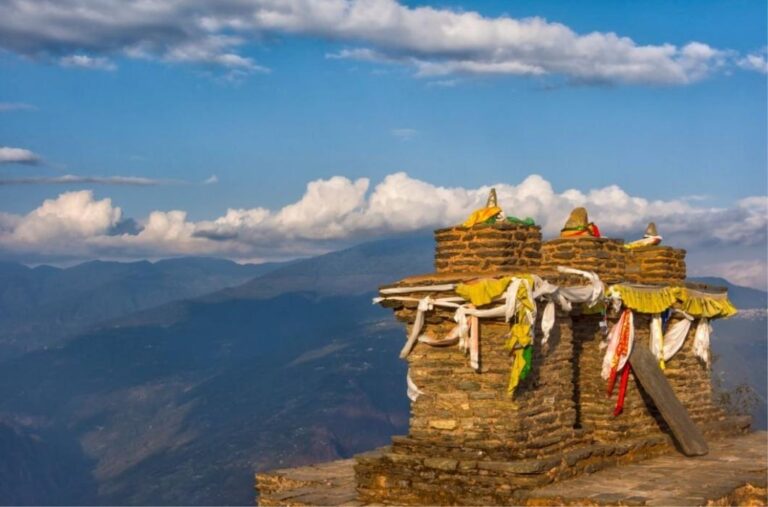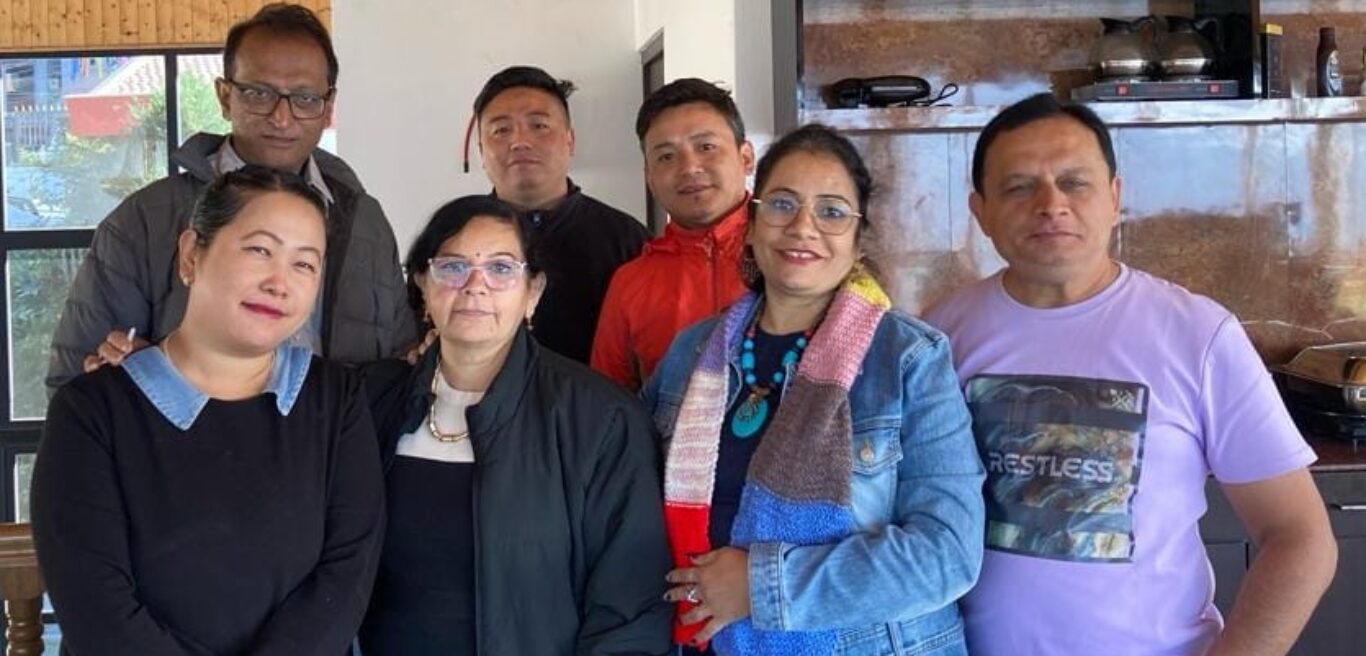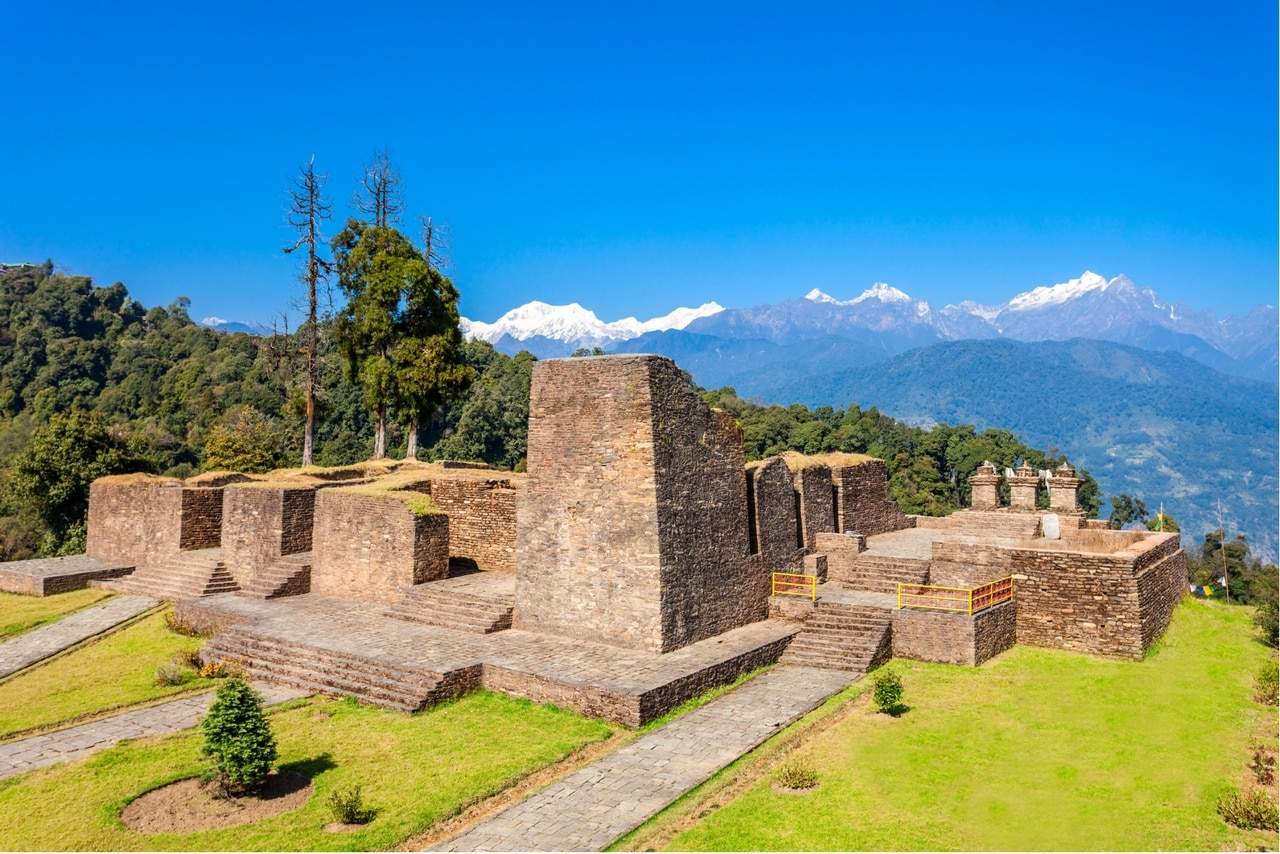RABDENTSE MONASTERY
Rabdentse Monastery stands as a silent witness to the glorious past of Sikkim. Once the capital of the Sikkimese Kingdom, Rabdentse’s ruins transport visitors back to a time when this place was bustling with life and the chants of Buddhist prayers.
The journey to Rabdentse Monastery is as enchanting as the destination itself. A short trek through the verdant forest, accompanied by the symphony of birds, leads to the ancient site. The path, draped in the moss and the whispers of history, sets the stage for an experience that is both mystical and grounding.
As you emerge from the canopy of trees, the first sight to greet you is the stone throne, known as ‘Namphogang,’ where the kings once delivered their judgments. It’s a sobering reminder of the transient nature of power and the enduring qualities of justice and wisdom.
Further exploration reveals the ‘Taphap Chorten,’ the gateway to what was once a grand palace. Although in ruins, the chortens stand proudly, echoing the architectural prowess of the Sikkimese artisans of yore. The main courtyard, now in ruins, offers a panoramic view of the southwestern region of Sikkim, a sight so breathtaking it’s easy to understand why the ancients chose this as their capital.
The ‘Dab Lhagang,’ where the royal family once offered prayers, adds a spiritual dimension to Rabdentse Monastery. It’s a place where one can’t help but feel a connection to something greater than oneself, a link to the divine that transcends the boundaries of time.

The white marble slab marking the location of the ‘Risum Gompa’ monastery is a poignant spot, inviting reflection on the impermanence of human endeavors and the eternal nature of faith.
Rabdentse Monastery is not just a historical site; it’s a pilgrimage for the soul. It’s part of a sacred circuit that includes the Dubdi Monastery, Norbugang Chorten, Tashiding Monastery, Pemayangtse Monastery, Sanga Choeling Monastery, and the serene Khecheopalri Lake. Each of these sites offers a unique glimpse into the spiritual heritage of Sikkim, and together, they form a journey that is as much inward as it is outward.
The best time to visit Rabdentse Monastery is between March and May when the weather is pleasant, and the rhododendrons are in full bloom, painting the landscape in vibrant hues. The winter months transform the region into a different realm, with snow-capped mountains offering a stark contrast to the lush greenery of the warmer seasons.
To reach Rabdentse, one can take a cab from the nearest town of Pelling, which is about 100 kilometers from Gangtok. The walk from Pelling to the ruins is an experience in itself, allowing one to slowly acclimate to the altitude and the profound sense of history that permeates the air.
Rabdentse’s story is one of peace and turmoil, of royal intrigue and spiritual pursuit. It’s a tale that is etched into the very stones of the ruins and whispered by the winds that sweep across the Himalayas. To visit Rabdentse is to step into a chapter of history that continues to inspire and captivate the hearts of those who wander through its remains.
In conclusion, Rabdentse Monastery is more than just a destination; it’s an experience that stays with you long after you’ve left its hallowed grounds. It’s a testament to the resilience of the human spirit and the enduring quest for meaning and connection. So, if you find yourself in East Sikkim, make sure to set aside a day for Rabdentse. It’s a place that offers not just a lesson in history but a perspective on life itself.


